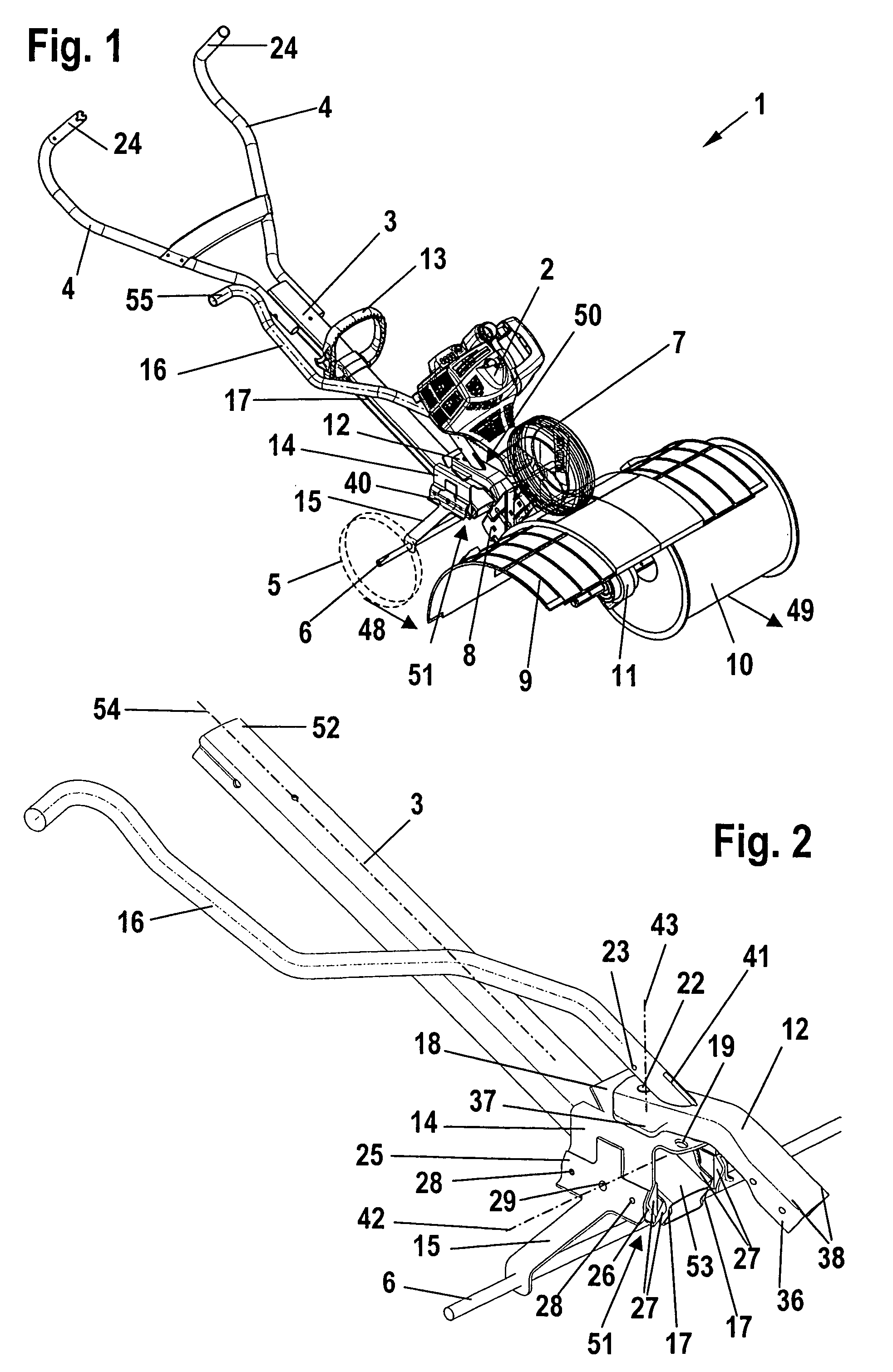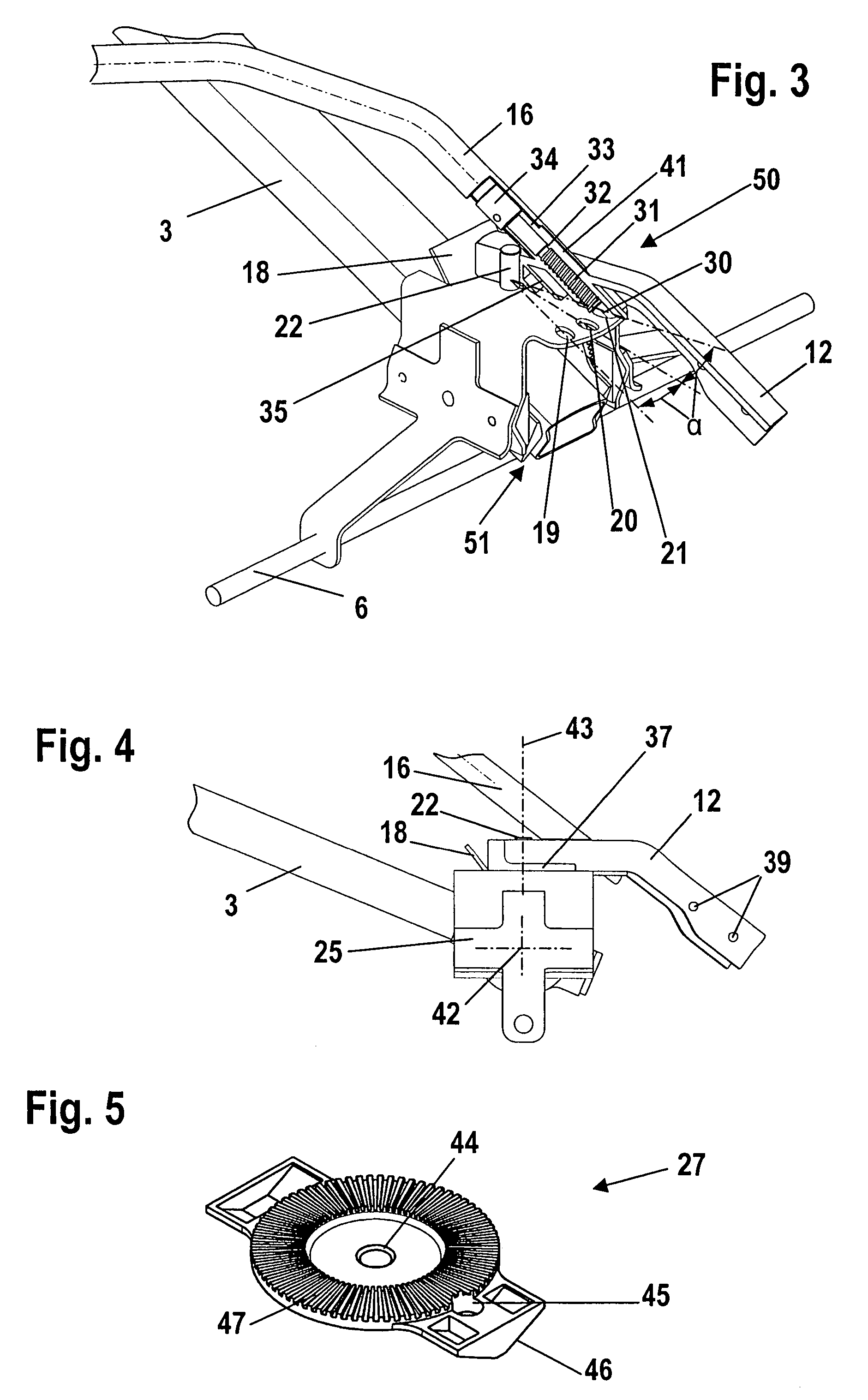Hand-guided sweeper
a technology of hand-guided sweepers and cleaning brushes, which is applied in the direction of carpet cleaners, applications, construction, etc., can solve the problems of slight retrofit complexity, and achieve the effects of light retrofit complexity, simple adjustment, and low cos
- Summary
- Abstract
- Description
- Claims
- Application Information
AI Technical Summary
Benefits of technology
Problems solved by technology
Method used
Image
Examples
Embodiment Construction
[0017]The sweeper 1 shown in FIG. 1 has a drive motor 2 such as a two-stroke engine which drives two sweeper brushes 10 in rotation via a flexible shaft (not shown) and a gear assembly 11. In FIG. 1, only one of the two sweeper brushes 10 is shown. The other sweeper brush 10 is arranged mirror symmetrically on the other side of the gear assembly 11. The two sweeper brushes 10 are partially surrounded by a protective cover 9. The drive motor 2 and the sweeper brushes 10 are fixed on a common mount 8. The mount 8 is attached to a mounting flange 12 at the bores 39 shown in FIG. 4. The mounting flange 12 is attached to a connecting flange 14 via a first adjusting device 50. A guide rod 3 is mounted on the connecting flange 14 via a second adjusting device 51. The adjusting devices50 and 51 are fixed at a first end 53 of the guide rod 3 (FIG. 2).
[0018]The drive motor 2 is arranged above the adjusting devices (50, 51) and thereby lies in the travel direction behind the sweeper brushes 10...
PUM
 Login to View More
Login to View More Abstract
Description
Claims
Application Information
 Login to View More
Login to View More - R&D
- Intellectual Property
- Life Sciences
- Materials
- Tech Scout
- Unparalleled Data Quality
- Higher Quality Content
- 60% Fewer Hallucinations
Browse by: Latest US Patents, China's latest patents, Technical Efficacy Thesaurus, Application Domain, Technology Topic, Popular Technical Reports.
© 2025 PatSnap. All rights reserved.Legal|Privacy policy|Modern Slavery Act Transparency Statement|Sitemap|About US| Contact US: help@patsnap.com



